Best Wood for Siding 2025
- July 31, 2023
- 0 comment
Selecting the right wood for siding is a significant decision, as the choice will influence not only the aesthetic appeal of your home but also its durability against the elements. The perfect type of wood for siding can add a warm and natural feel to your home, as well as provide excellent insulation. In this article, we will explore some of the best types of wood for siding and delve into the unique characteristics that set them apart, providing an informative guide to making the best decision for your home.
Best Wood for Siding List:
1. Cedar Wood
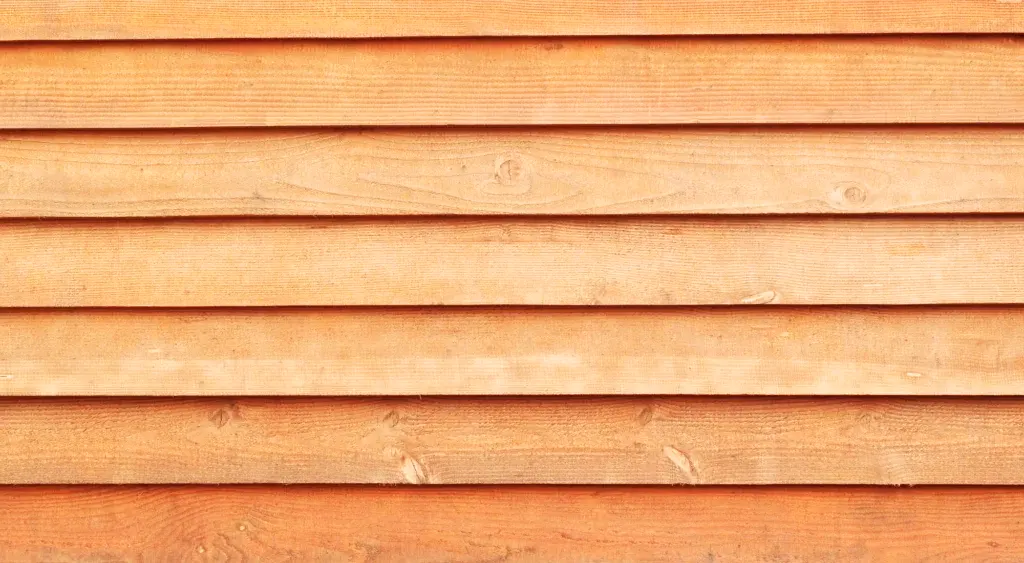
Cedar, specifically Western Red Cedar, is considered one of the most premium choices for wood siding due to its inherent resistance to rot and insects. With its warm, reddish hue and tight grain, cedar wood offers natural beauty that can stand the test of time. It can be left untreated to age naturally, or it can be painted or stained for added protection and aesthetic appeal. Cedar also offers a unique bonus in its inherent ability to dampen noise, making it an excellent choice for homes in busier areas.
Imagine a sprawling, two-story Colonial-style home adorned with cedar clapboard siding. The cedar’s rich, warm hue complements the home’s traditional architecture, enhancing its timeless appeal. The homeowners have opted to stain the cedar to protect it and maintain its beautiful reddish color. The cedar siding, with its tight grain and minimal knots, provides a clean, uniform appearance that suits the elegant style of the home.
Benefits:
- Natural beauty: Cedar has a rich color and tight grain that many homeowners find appealing.
- Durability: Cedar is naturally resistant to rot and insect damage, which makes it long-lasting.
- Insulation: It offers good thermal insulation, keeping homes cool in the summer and warm in the winter.
- Versatility: It can be painted, stained, or left natural, offering various aesthetic options.
Drawbacks:
- Price: Cedar tends to be more expensive than many other types of wood.
- Maintenance: To maintain its color and prevent decay, it requires regular sealing or staining.
Maintenance: Cedar siding should be cleaned annually and inspected regularly for signs of damage or wear. It can be left natural, but to maintain its color, it should be sealed or stained every few years. It’s also recommended to treat cedar siding with a product that deters insects and prevents decay.
2. Redwood
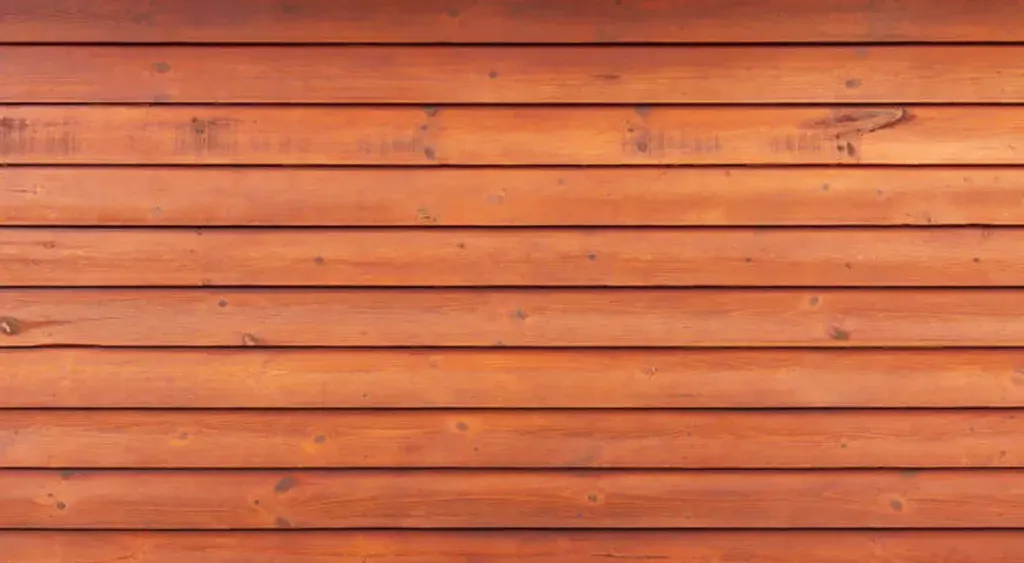
Redwood is another top-tier option that rivals cedar in durability, resistance to rot, and beauty. It possesses a slightly more consistent color and a smoother grain than cedar, which some homeowners prefer. It’s also less likely to warp, crack, or check (form small splits) than many other wood types, making it a great long-term investment. However, it’s worth noting that redwood tends to be more expensive due to limited availability, especially outside of the Pacific Coast.
Picture a modern farmhouse with redwood board-and-batten siding. The vertical installation of the boards lends the home an elongated, dignified appearance. The redwood’s natural resistance to warping helps maintain the home’s sleek, linear aesthetic. The homeowners have chosen to leave the redwood unstained, allowing it to age to a soft, silvery gray over time, complementing the home’s modern, rustic design.
Benefits:
- Aesthetics: Redwood has a rich, warm color and beautiful grain.
- Durability: It’s naturally resistant to warping, checking, shrinking, rot, and insects.
- Stability: Redwood holds finishes well due to its minimal pitch and resin.
Drawbacks:
- Cost: Redwood is one of the more expensive wood options due to its quality and limited availability.
- Environmental impact: Overharvesting concerns exist with redwood, so it’s crucial to source it responsibly.
Maintenance: Like cedar, redwood needs to be cleaned yearly. While it’s more resistant to rot and insects than some other woods, a sealant can help preserve its color and prolong its life. A clear or semi-transparent stain is often recommended for redwood to allow its natural beauty to shine through.
3. Cypress Wood
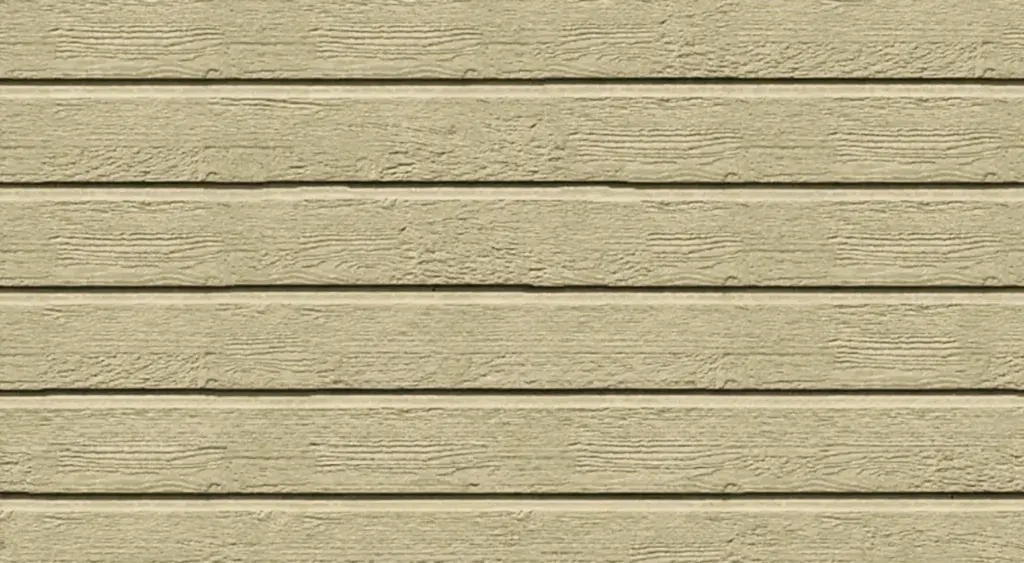
Cypress is a sturdy, durable wood that thrives in southern swampy areas and offers a unique grain with an elegant, rustic appeal. Its durability and resistance to insects and rot make it another excellent choice for siding. While it may not be as readily available in all regions, cypress can be worth the effort and cost for the unique character it brings to a home.
Visualize a quaint coastal cottage featuring cypress shiplap siding. The horizontal installation of the shiplap lends the home a cozy, welcoming appeal. The cypress’s inherent resistance to rot and insects is perfect for the seaside environment, and its unique, rustic look harmonizes with the cottage’s casual, beachy vibe.
Benefits:
- Durability: Cypress is resistant to rot, insects, and other damaging elements.
- Workability: It’s easy to cut, saw, and nail without splintering, making it user-friendly.
- Aesthetics: It has a light, yellowish color that can be beautiful on many homes.
Drawbacks:
- Availability: Depending on your location, cypress can be difficult to source, making it more expensive.
- Maintenance: Regular maintenance, including cleaning and sealing, is necessary to keep it in top shape.
Maintenance: Cypress should also be cleaned annually. Its resistance to insects and decay means it can be left untreated, but a sealant or stain can enhance its color and provide extra protection. Inspect it regularly for any signs of damage or wear.
4. Pine Wood
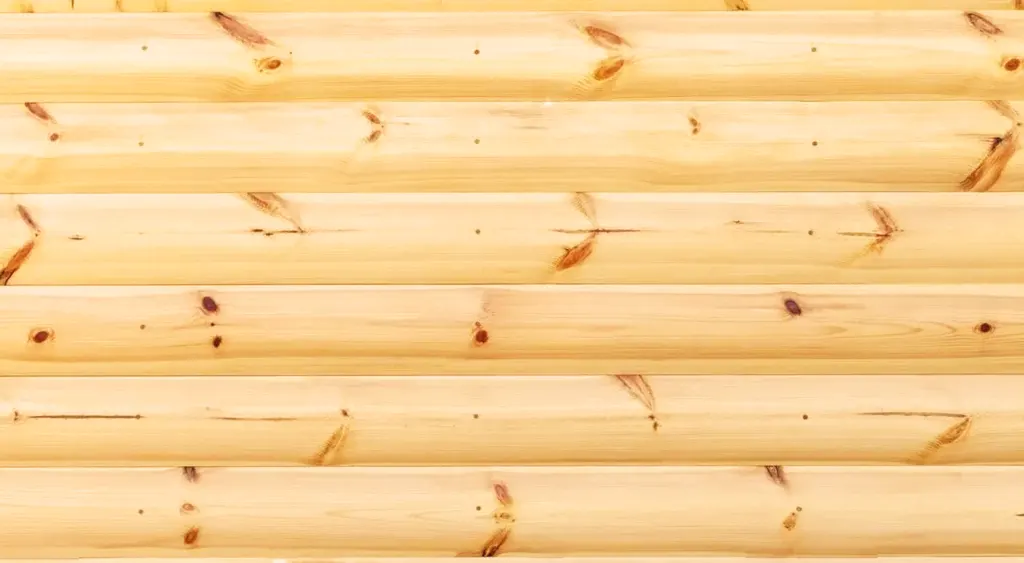
Pine Wood is a cost-effective option for wood siding. It’s widely available and easy to work with, which can reduce labor costs. It also takes paint and stains well, providing homeowners with flexibility in terms of aesthetics. However, it’s important to note that pine is a softwood, which means it’s less resistant to rot and insect damage than the previous options. It generally requires regular maintenance and may not last as long in harsh weather conditions.
Imagine a log cabin nestled in the woods, its exterior clad in pine log siding. The pine, stained with a warm honey color, fits seamlessly into the natural surroundings. Despite the rustic, rugged appearance, the homeowners maintain the pine diligently, treating it regularly to prevent rot and deter insects, ensuring the cabin will remain a haven for many years to come.
Benefits:
- Cost: Pine is usually less expensive than other wood siding options.
- Versatility: It accepts paint and stains well, offering a wide range of aesthetic options.
- Availability: Pine is widely available in most regions.
Drawbacks:
- Durability: Pine is less resistant to rot and insects than many other woods and thus requires more maintenance.
- Warping: It can warp or twist over time if not properly treated and maintained.
Maintenance: Pine siding needs regular maintenance. It should be painted or stained to protect it from the elements, and this finish will need to be reapplied every few years. Pine also needs to be cleaned annually and inspected regularly for signs of rot or insect damage.
5. Spruce Wood
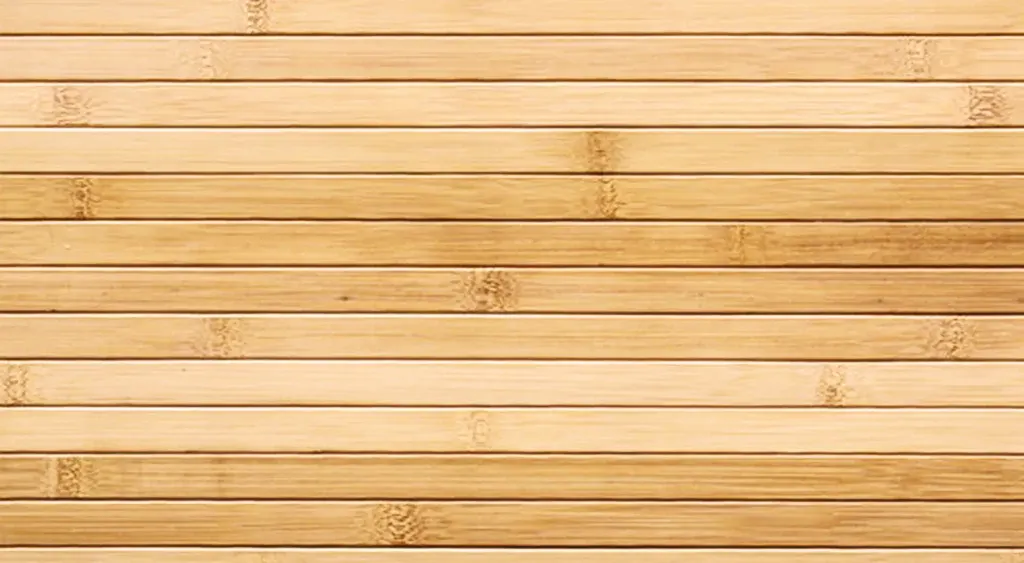
Spruce Wood is another softwood that is similar to pine in many aspects. It’s affordable, takes paint well, and is relatively easy to source and install. However, spruce tends to have more knots than pine, which can add character but may also present challenges during installation and maintenance. Like pine, spruce is less resistant to rot and insects and may require regular upkeep.
Envision a rustic mountain retreat nestled among the pines, its exterior clad in spruce shake siding. The shakes, with their rough, textured surface, imbue the home with a natural, rugged charm that perfectly complements the surrounding wilderness. The spruce has been stained a rich, dark brown, echoing the trunks of the towering trees around it.
The homeowners chose spruce because of its affordability and availability in their region. They’re aware that spruce requires a bit more maintenance than some other wood types, so they’ve committed to a regular schedule of cleaning, staining, and inspection to protect their investment. Despite the extra work, they love the warm, rustic look of the spruce and feel that it enhances the connection between their home and its beautiful natural setting.
Benefits:
- Cost: Spruce is generally inexpensive compared to other types of wood.
- Aesthetics: It has a light color and fine grain that many homeowners find attractive.
- Workability: Spruce is easy to work with and can be painted or stained to any desired color.
Drawbacks:
- Durability: Spruce is susceptible to rot and insect damage, so it needs regular maintenance and treatment.
- Consistency: The quality of spruce can vary significantly, with some boards featuring many knots and others featuring few.
Maintenance: Like pine, spruce needs regular maintenance. It should be painted or stained to protect it from the elements, with reapplication every few years. Annual cleaning and regular inspections for rot or insect damage are also necessary.
6. Fir Wood
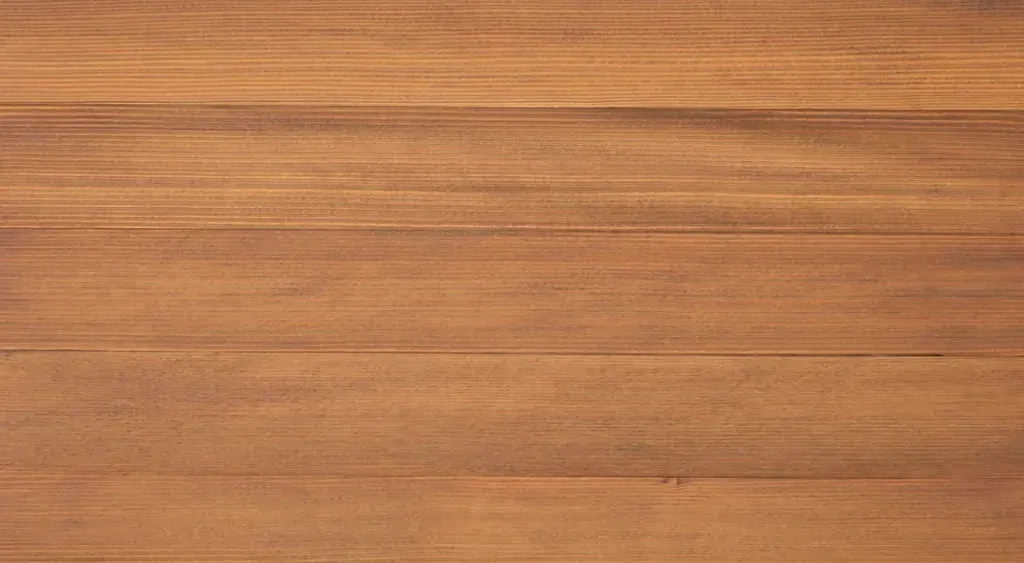
Fir Wood is a dense, durable wood that offers an excellent compromise between affordability and durability. It’s harder than pine or spruce, which makes it more resistant to dents and damage. Fir also holds paint exceptionally well, making it a good choice for homeowners interested in vibrant or unique color schemes. However, like other softwoods, it is less resistant to rot and insects than options like cedar or redwood.
Contemporary home boasting fir tongue-and-groove siding. The clean lines of the tongue-and-groove installation enhance the home’s modern design. The homeowners have chosen to paint the fir a deep charcoal color, creating a striking contrast with the home’s crisp, white trim. Despite its stylish appearance, the fir siding is not just for show – it also stands up well to the home’s urban environment, offering durability along with style.
Benefits:
- Durability: Fir is known for its strength and resistance to wear, making it suitable for high-traffic areas.
- Stability: It holds nails and screws well, reducing the chances of splitting.
- Aesthetics: Fir has a straight grain and light color that can be appealing.
Drawbacks:
- Maintenance: It requires regular staining or painting to prevent weather damage.
- Cost: High-quality fir can be more expensive than other softwoods.
Maintenance: Fir is a bit tougher than pine or spruce, but it still requires regular maintenance. It should be stained or painted to protect it, and this finish will need to be reapplied periodically. As with the other woods, annual cleaning and regular inspections are recommended.
Head-To-Head Comparison Chart of Best Wood for Siding
| Wood Type | Durability | Aesthetics | Cost | Maintenance | Unique Characteristics |
|---|---|---|---|---|---|
| Cedar | High | High | High | Medium | Resistance to rot and insects, Noise dampening |
| Redwood | High | High | Very High | Low | Less likely to warp or crack, Smooth grain |
| Cypress | High | Medium | Medium-High | Medium | Resistance to rot and insects, Unique rustic appeal |
| Pine | Low | Medium | Low | High | Cost-effective, Paint-friendly |
| Spruce | Low | Medium | Low | High | More knots, Paint-friendly |
| Fir | Medium | Medium | Low-Medium | Medium | Dense and durable, Holds paint well |
Most Common Installation Methods for Wood Siding
Clapboard (or Bevel) Siding
This traditional method involves long, thin boards installed horizontally with an upper piece that overlaps the lower piece. The overlapping design helps to shed water effectively, keeping the wall underneath dry. However, this design may need regular maintenance to ensure that the boards remain sealed and protected.
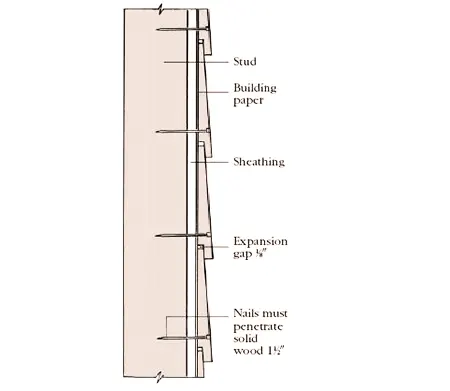
Board-and-Batten Siding
In this vertical design, wide boards are installed side by side with gaps filled by narrower batten boards. This creates a charming rustic or farmhouse aesthetic. The vertical orientation can make your house look taller and can be especially effective at shedding water if installed correctly.

Shiplap Siding
Shiplap siding is another horizontal method where boards are designed to overlap and fit snugly together, creating a tight seal. The boards have special rabbet cuts on the edges that allow them to overlap and fit together seamlessly, offering a smooth and consistent look. This is a very popular style due to its efficiency and clean, modern appearance.
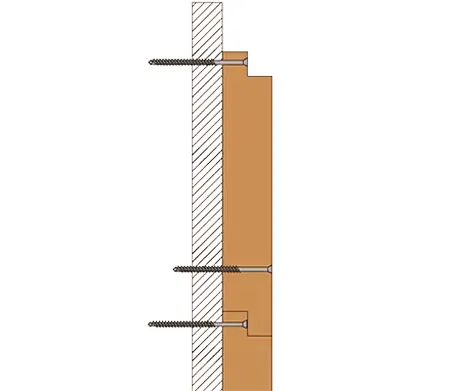
Tongue-and-Groove Siding
Similar to shiplap, tongue-and-groove siding involves boards that fit together seamlessly. One edge of the board has a protruding ridge (the tongue), while the other has a groove. The tongue of one board fits into the groove of the next. This provides a highly effective seal against the weather. Like shiplap, tongue-and-groove can be installed either horizontally or vertically and provides a smooth, clean aesthetic.
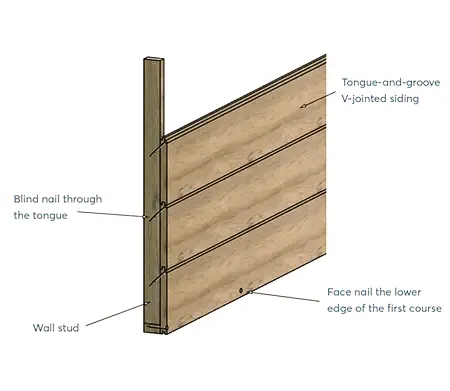
Shake (or Shingle) Siding
Shake siding refers to the use of split logs, which create a rustic, textured aesthetic. Shingles are similar but are sawn rather than split, offering a more uniform and refined appearance. Both types are installed in an overlapping manner, which can provide excellent weather resistance. However, these styles can be more labor-intensive to install and may require more maintenance than some other options.
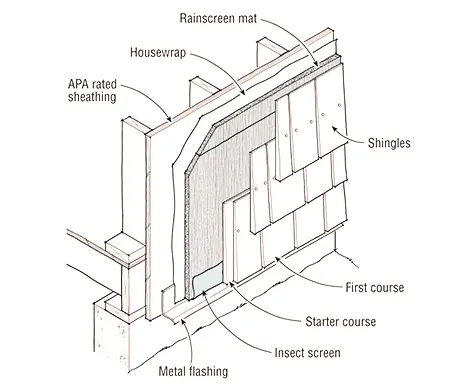
Log Siding
This style gives the home the appearance of a log cabin. The siding is either made from logs that have been split and milled into siding or from new wood that’s been processed to look like logs. This type of siding is quite unique and appealing to homeowners looking for a rustic aesthetic. However, log siding requires a significant amount of maintenance to keep it looking good and to prevent decay.
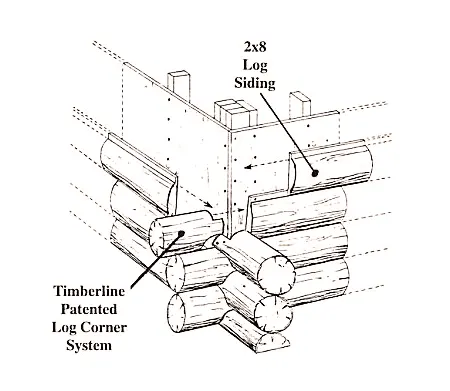
Conclusion
Selecting the ideal wood for your home’s siding is no small decision; it’s a task that requires a thoughtful balance of several factors. Each wood type carries its unique palette of characteristics and charm, along with a specific set of care requirements. There is beauty to be found in every option – whether it’s the rich hue and tightly knit grain of cedar, the warm tones of redwood, or the light, yellowish hues of cypress.
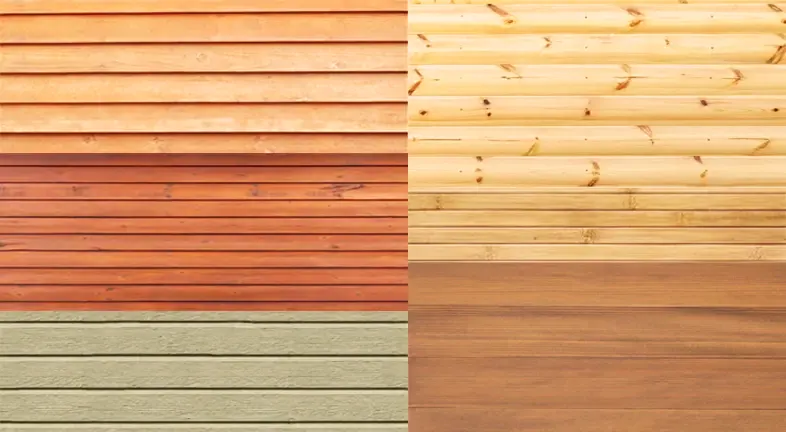
If durability is your top priority, cedar, redwood, and cypress stand as robust contenders. These types of wood naturally resist rot and insect damage, making them great long-lasting choices. However, the privilege of such durability comes with a higher price tag – but many homeowners find the initial investment to be worthwhile given the long-term benefits.
On the other hand, if budget and versatility are your primary considerations, then pine, spruce, and fir may be more to your liking. These woods, while requiring a bit more maintenance, come with a lower upfront cost. Additionally, their wide availability and the fact that they take well to paint and stain means you have a lot of flexibility when it comes to achieving the exact look you desire.
Personally, I find that the process of choosing wood siding presents an exciting opportunity to define and enhance the aesthetic charm of my home. As I weigh the merits of each wood type against my home’s needs and my personal preferences, I feel empowered to make a choice that will not only protect my home but also amplify its beauty.
In this journey of choosing the best wood for siding, remember that there’s no one-size-fits-all answer. Your decision will be a reflection of your home’s specific requirements, your personal taste, your commitment to maintenance, and of course, your budget. No matter which wood you select, the ultimate goal is to enhance your home’s appeal and ensure its durability for years to come.
With careful consideration and the right care, the wood siding you choose will serve as a protective shield and an aesthetic enhancement, painting a picture of your home that is not just visually pleasing, but a true reflection of your lifestyle and values. After all, our homes are an extension of ourselves, and what better way to express that than through the thoughtful selection of something as foundational as our home’s siding?
Discover the Allure of Wood Siding Materials
When it comes to house sidings, wood makes a powerful statement. More than just a shield against Mother Nature, wood siding transforms the appearance of a home, giving it a touch of timeless elegance. Whether it’s the hearty feel of a log cabin from split-log siding or the quaint charm of a rustic farmhouse with shiplap, wood siding undeniably possesses a charisma that’s rooted in nature. Here’s a deeper dive into the world of wood sidings, with three key types that have caught the homeowners’ eye: wood fiber cement, engineered wood, and evergreen natural wood.
- Wood Fiber Cement: A captivating blend of natural wood’s cellulose fibers, combined with Portland cement, sand, and water, creates this innovative siding. Through meticulous crafting, manufacturers aim to capture the essence of natural wood. While it might not always hit the authenticity mark, its resilience against fire, insects, and general wear makes it a top contender in the durability department.
- Engineered Wood: Imagine natural wood fibers, encased in resin and binder, then pressed to perfection. The result? A lightweight, sturdy siding that won’t put a strain on your budget. Engineered wood is a popular choice for those wanting the feel of wood without the hefty price tag. And although it might call for a splash of paint now and then, its allure is hard to resist.
- Natural Wood: The epitome of pure elegance, natural wood siding comes straight from the heart of nature. With classic choices like pine and cedar leading the way, there are also distinguished redwood, cypress, spruce, and fir options to consider. Many prefer to stain it, letting the wood’s intricate grains tell their own story. While it’s undeniably luxurious, it demands more TLC compared to its engineered counterparts.
So, the next time you find yourself dreaming of that perfect home facade, remember: wood siding is not just a material – it’s a statement.
Frequently Asked Questions
- Does wood siding increase home value?
Yes, wood siding, when well-maintained, can increase the value of your home. Its natural and timeless appeal can make a home more attractive to potential buyers. However, prospective buyers may also consider the maintenance requirements of wood siding. - Can I install wood siding myself?
While it’s possible to install wood siding yourself if you have the necessary skills and tools, it’s usually recommended to hire a professional. This is because improper installation can lead to problems like warping, rot, and insect damage down the line. - How often should wood siding be painted or stained?
The frequency depends on the type of wood, the quality of the previous paint or stain job, and the local climate. On average, wood siding should be repainted every 5-7 years or restained every 3-5 years. Regular inspections can help determine when it’s time for a fresh coat. - What’s the most environmentally friendly wood siding option?
Wood siding options like cedar and redwood are renewable resources, but their harvesting can impact the environment. Choosing wood sourced from sustainably managed forests and certified by organizations like the Forest Stewardship Council can be a more environmentally friendly choice. Additionally, some types of wood, like cypress, are more locally available in certain areas, reducing the environmental impact of transportation. - Is wood siding fire-resistant?
While no siding is completely fireproof, some types of wood siding can be treated with fire-retardant chemicals to improve their fire resistance. However, wood is generally less fire-resistant than other siding options like metal or brick. - Can wood siding be used in any climate?
Wood siding can be used in a variety of climates, but certain types may be better suited to specific conditions. For example, cedar and redwood are good choices for damp climates due to their natural resistance to rot. Any type of wood siding will last longer and perform better with regular maintenance, especially in harsh climates. - What is the most durable type of wood siding?
Cedar, redwood, and cypress are often considered the most durable types of wood for siding due to their natural resistance to insects, decay, and weather damage. However, even these types require regular maintenance to ensure their longevity. - Can I use different types of wood siding on the same house?
Yes, using different types of wood siding on the same house can add visual interest and allow you to take advantage of the different strengths of each type of wood. For example, a more durable and expensive wood could be used on exposed parts of the house, while a less expensive type could be used in protected areas.
We’d love to get your input! Share your personal experiences and views on the Best Wood for Siding 2025 in the comments section below. Your insights could greatly assist fellow homeowners in making informed choices!

David Murray
Forestry AuthorI'm David Murry, a forestry equipment specialist with a focus on chainsaw operation. With over 13 years of experience, I've honed my skills in operating and maintaining a wide range of machinery, from chainsaws to log splitters. My passion for the outdoors and commitment to sustainable forestry drive my work, which emphasizes safety, efficiency, and staying updated with industry advancements. Additionally, I'm dedicated to sharing my expertise and promoting environmental awareness within the forestry community.





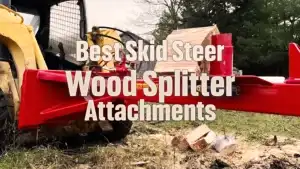







Leave your comment